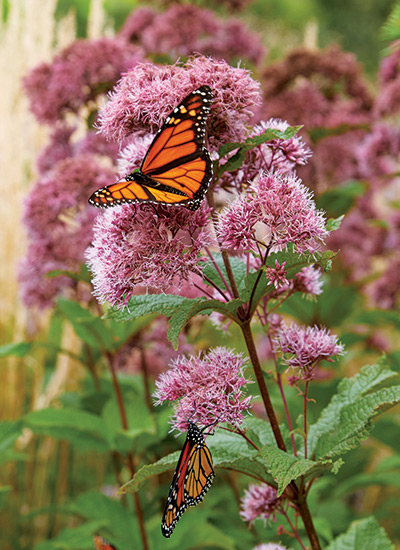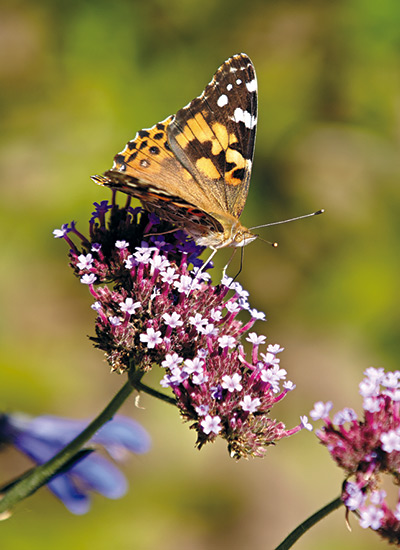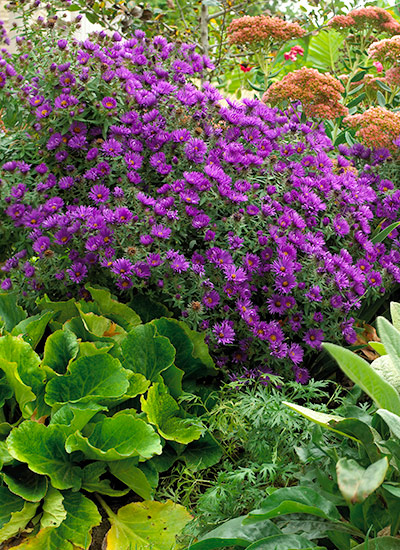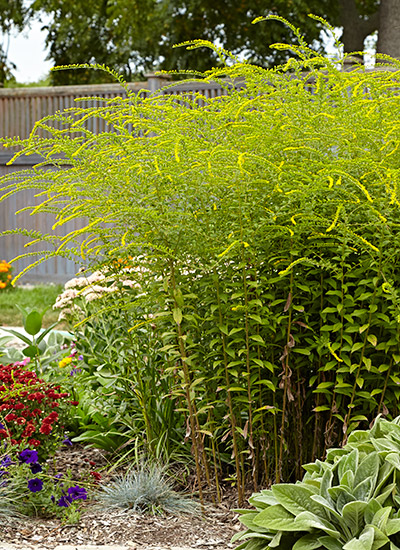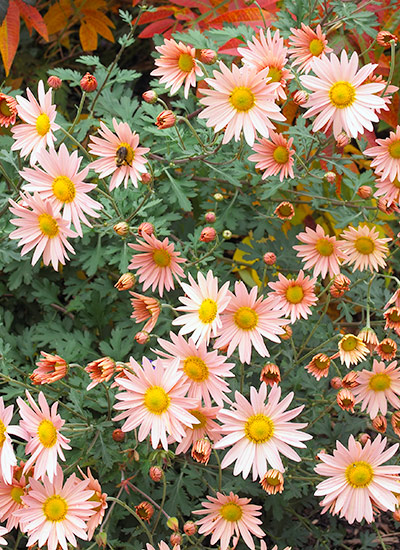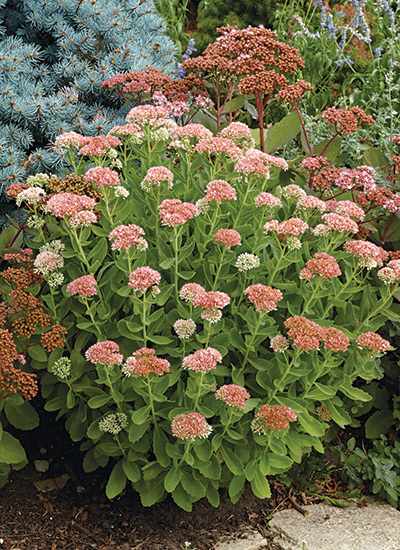
Support butterflies in fall
Butterflies need your help more than ever this time of year. Fall gardens are critical to their survival, providing shelter for overwintering species and food for those that migrate. Jane Hurwitz, editor of the North American Butterfly Association’s Butterfly Gardener magazine and author of Butterfly Gardening, has years of real-world experience gardening for butterflies. She has some great suggestions about how to create a welcoming fall garden. Give a look at her design tips below, and then scroll on to find 6 fall perennials butterflies love.
Tips for designing a fall garden butterflies love
- Keep fall cleanup to a minimum to provide shelter for eggs, caterpillars, chrysalises and adults that don’t migrate. It’s beneficial for your garden, too. Keeping a 2- to 3-inch layer of fallen leaves as mulch won’t smother your plants but still protects any caterpillars that are sheltering in them. Besides that, as the leaves break down they create leaf mold, a form of compost, to enrich the soil.
- If leaving the garden on its own in fall sounds a bit too wild for your style, designate a butterfly area that’s out of sight, such as behind the garage, or position your butterfly garden far from the house where the messiness isn’t as obvious. (Another hint: Use decorative iron fencing to give your butterfly area some structure. A fence will help keep floppy plants upright, too.)
- Later in spring, don’t hurry to remove the previous fall’s layer of debris everywhere — give the butterflies time to get moving. Some plants will need to be uncovered, and there’s usually some dead growth that needs to be cut back. But as you do this, keep an eye out for well-camouflaged chrysalises. If you find one, carefully move the stem to an out-of-the-way spot so the butterfly can finish maturing.
- Recent research at Cornell University suggests that one reason for the dwindling monarch population may be a lack of late-season nectar plants on their migratory routes. Grow plants that flower into fall to provide the pockets of habitat they need to refuel along the way. Other butterflies that are often active in fall, such as American ladies, red admirals, common buckeyes and sulphurs, will also benefit.
- Whatever you choose to grow in your fall garden, plant in groups so butterflies don’t have to work as hard to find their meals. To a tiny insect with a short life span, a big patch of flowers is easier to find than one or two plants here and there.
Find other butterfly gardeners
Jane also finds connecting with other local butterfly gardeners is a great resource. Want to meet more butterfly gardeners? Visit the North American Butterfly Association website for a listing of local chapters where you can meet other butterfly gardeners.
You Might Also Like:
Butterfly-friendly garden plan
Fall container butterflies will love
How to harvest and plant milkweed seeds
Nectar and host plants for butterflies
How to identify common butterflies



